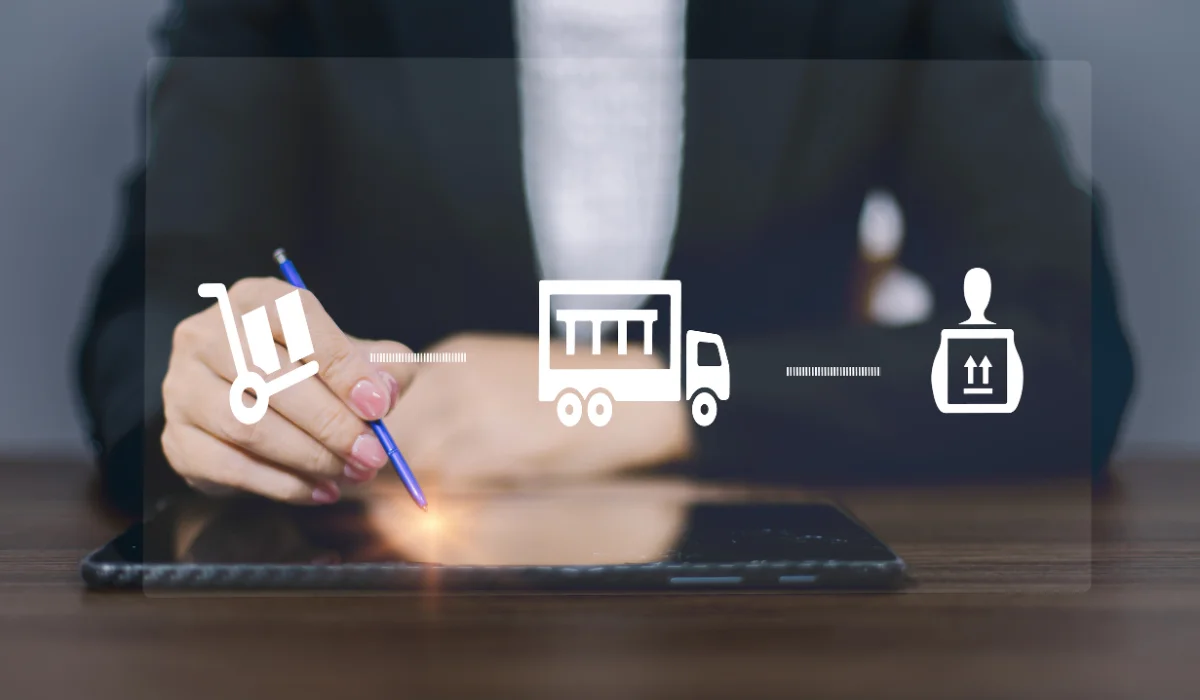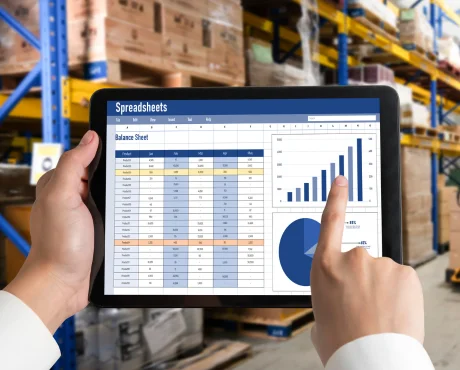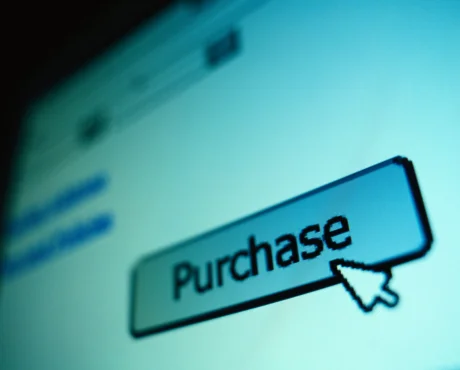How do you decide what to purchase and when to purchase? Do you believe in your gut and intuitions or make realistic decisions based on solid facts and data? In today’s business climate, procurement is important in the supply chain.
Data-driven procurement is an organizational transformation that enables the full use of data and analytics to support better decision-making processes. That approach enables firms to achieve optimum cost-effectiveness while managing risks in a better way through stronger supplier partnerships. How? Let’s understand the benefits of using data for procurement and sourcing.
How Data-Driven Procurement & Sourcing Helps in Supply Chain Management

1. Improved Cost Control and Savings
Using data allows organizations to achieve optimal procurement expense management. Businesses that obtain real-time supplier data, market trends data, and pricing information can make purchasing decisions that produce substantial saving opportunities.
Key factors include:
- Spend Analysis: Procurement teams can examine previous spending trends to discover areas of waste, overspending, or missed possibilities for discounts.
- Supplier Negotiations: By leveraging real-time market data and supplier performance metrics, procurement teams can negotiate better pricing and terms with suppliers, resulting in more favorable agreements.
- Demand Forecasting: Data-driven insights assist procurement teams in more correctly predicting demand, allowing organizations to prevent stockouts or overstocking, both of which incur considerable financial consequences.
2. Enhanced Risk Mitigation
Every business operating in the supply chain must deal with unavoidable risks. Data-driven procurement processes help detect and proactively manage those risks instead of responding after the fact.
- Supplier risk assessment: Through data analytics, businesses can evaluate their suppliers’ financial position, performance records, and business risk levels in different regions. Organizations can expand their supplier base by finding different providers, decreasing their dependency on sole sources to avoid supply chain disruptions.
- Scenario planning: Utilizes predictive analytics tools to produce different future scenarios that help organizations develop contingency plans.
- Continuous monitoring: Real-time tracking of external market changes, combined with regulatory movements and supplier outcomes, enables procurement teams to find solutions before the most difficult problems develop.
3. Data-Driven Supplier Collaboration
The necessity to collaborate with suppliers continues to grow because supply chains are becoming more complex. When procurement is driven by data, suppliers and customers develop open relationships through mutual access to performance data, forecasting information, and service delivery schedules.
- Supplier performance management: Through data analytics, procurement teams can monitor key performance indicators (KPIs) such as on-time delivery, quality, and cost adherence. This performance tracking allows for better decision-making when selecting suppliers or renegotiating contracts.
- Joint forecasting and planning: By sharing data with suppliers, procurement teams can collaborate on accurate demand forecasting, helping suppliers adjust production schedules, optimize lead times, and align their capabilities with business needs.
- Improved transparency: Data-driven procurement software ensures that all stakeholders, buyers and suppliers, are on the same page regarding expectations, requirements, and performance goals. This leads to more efficient and productive partnerships.
4. Streamlined Procurement Process
Procurement is a complex process that involves multiple steps, from sourcing and negotiating to managing contracts and payments. Data-driven procurement streamlines these processes, reducing manual work and improving overall efficiency:
- Automation of routine tasks: AI and machine learning technologies can automate time-consuming tasks such as purchase order generation, invoice matching, and supplier communication. This automation reduces administrative overhead and minimizes the risk of human error.
- Faster procurement cycles: With real-time access to data, procurement teams can expedite decision-making processes. Data-driven tools allow organizations to quickly identify the best suppliers, negotiate terms, and finalize purchases without unnecessary delays.
- Enhanced contract management: By leveraging historical data and performance analytics, procurement teams can ensure that contracts are optimized, compliant, and aligned with business goals.
5. Smarter Decision-Making
The shift from traditional to data-driven supply chain allows for more accurate, evidence-based decision-making. Instead of relying on intuition or outdated spreadsheets, procurement teams can make decisions based on real-time, comprehensive data that reflects current market conditions, supplier capabilities, and business needs.
- Predictive insights: Predictive analytics models can forecast market trends, pricing changes, and future demand. These insights empower procurement teams to make informed sourcing decisions well in advance, reducing the risks associated with last-minute purchasing or stockouts.
- Strategic sourcing decisions: With data-driven insights, procurement professionals can identify the best sourcing options, including the most cost-effective suppliers, the most efficient delivery methods, and the most suitable contract terms.
- Negotiation leverage: Data on supplier performance, market pricing, and historical purchasing data gives procurement teams the leverage they need during negotiations. Procurement professionals can secure better terms and pricing for their organization by having hard data on their side.
The Role of Data in Different Stages of Procurement
Data plays a vital role at each stage of the procurement lifecycle. Organizations can enhance every decision by utilizing analytics throughout the process, from sourcing to final payment. Below is a breakdown of how data impacts procurement at each step:

1. Sourcing and Supplier Identification
Data plays an instrumental role in the sourcing phase by identifying the best suppliers. Instead of relying solely on traditional supplier relationships or recommendations, procurement professionals use data-driven insights to evaluate potential suppliers based on performance history, pricing models, and risk profiles.
- Supplier evaluation: By analyzing supplier data, procurement teams can assess suppliers based on quality, delivery times, and reliability, ensuring the best fit for the business.
- Market intelligence: Data on market trends, pricing patterns, and competitor behavior can help procurement teams identify emerging suppliers or market conditions that could influence sourcing strategy and decisions.
2. Supplier Selection and Negotiation
At this stage, data helps procurement professionals identify the suppliers who offer the best value. Negotiations are no longer based solely on intuition or supplier relationships. With data-driven insights, teams can approach negotiations with concrete evidence of supplier performance, pricing trends, and market conditions.
- Spend analysis: Procurement teams can identify potential areas for cost savings or volume discounts during negotiations by analyzing historical spending patterns.
- Risk analysis: Data on a supplier’s financial health, compliance history, and geopolitical risks helps businesses assess the stability of potential suppliers, making negotiations more strategic and data-backed.
3. Purchase Order and Contract Management
Once a supplier is selected, data plays a crucial role in managing purchase orders and contracts.
- Automated workflows: Data-driven procurement tools automate the generation of purchase orders, ensuring accuracy and reducing the time required for manual interventions.
- Contract analytics: Data allows procurement teams to assess contract terms for cost-effectiveness, compliance, and performance. Through contract analytics, businesses can identify opportunities to renegotiate terms or eliminate inefficiencies.
4. Delivery and Performance Monitoring
Monitoring supplier performance and ensuring timely delivery is critical in procurement. With data-driven tools, procurement teams can track supplier performance in real time.
- Key performance indicators (KPIs): Data allows procurement teams to track KPIs such as delivery timelines, quality control, and cost adherence, providing transparency into supplier performance.
- Real-Time tracking: Through integrated supply chain platforms, procurement teams can receive real-time updates on delivery statuses, ensuring issues are identified early and corrective actions are taken promptly.
5. Invoice and Payment Management
The final stage of procurement involves processing invoices and payments, and data can help ensure accuracy and efficiency in this area as well.
- Invoice matching: By using data from purchase orders and supplier contracts, procurement teams can automate the process of matching invoices to ensure that suppliers are paid on time and according to the agreed terms.
- Fraud prevention: Data analytics help identify discrepancies or anomalies in invoices, preventing errors or fraudulent activities before they affect the business.
Key Technologies Supporting Data-Driven Procurement

Implementing data-driven procurement strategies depends on adopting various technologies that enable real-time data collection, analysis, and action. These technologies include:
- Artificial intelligence (AI) and machine learning (ML): AI and ML algorithms analyze large datasets, uncover hidden patterns, and provide predictive insights that support procurement decision-making. These technologies are particularly valuable in demand forecasting, supplier risk management, and spend analysis.
- Cloud-Based procurement platforms: Cloud technology allows for seamless integration of procurement processes across departments and locations. These platforms offer real-time data access, facilitate collaboration, and provide a centralized view of procurement activities.
- Blockchain: Blockchain enhances transparency and traceability within the supply chain. By securely tracking product origins, shipments, and transactions, blockchain ensures the integrity of procurement processes, reducing the risk of fraud and non-compliance.
- Predictive analytics: Predictive tools use historical data and advanced algorithms to forecast future demand, pricing, and market conditions, helping procurement teams plan their strategies more effectively.
Conclusion
Data-driven procurement is revolutionizing the way organizations approach supply chain management. By utilizing advanced technologies such as AI, machine learning, and predictive analytics, businesses can optimize procurement processes, mitigate risks, and make smarter, more cost-effective decisions. As organizations continue to embrace data-driven procurement, they’ll gain a competitive edge that strengthens their supply chain and drives long-term success in an increasingly complex and fast-moving market.





